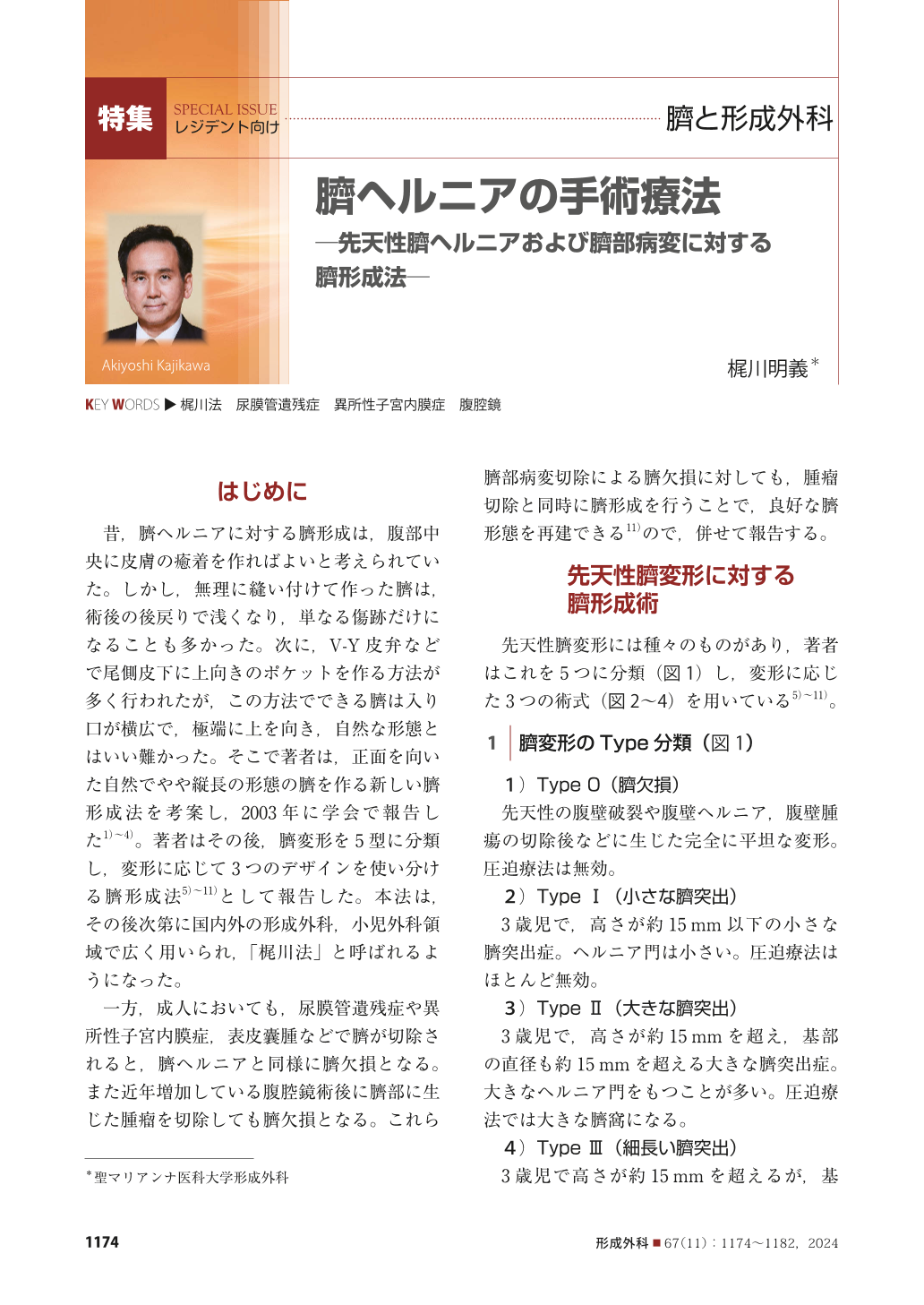Japanese
English
- 有料閲覧
- Abstract 文献概要
- 1ページ目 Look Inside
- 参考文献 Reference
はじめに
昔,臍ヘルニアに対する臍形成は,腹部中央に皮膚の癒着を作ればよいと考えられていた。しかし,無理に縫い付けて作った臍は,術後の後戻りで浅くなり,単なる傷跡だけになることも多かった。次に,V-Y皮弁などで尾側皮下に上向きのポケットを作る方法が多く行われたが,この方法でできる臍は入り口が横広で,極端に上を向き,自然な形態とはいい難かった。そこで著者は,正面を向いた自然でやや縦長の形態の臍を作る新しい臍形成法を考案し,2003年に学会で報告した 1)~4)。著者はその後,臍変形を5型に分類し,変形に応じて3つのデザインを使い分ける臍形成法 5)~11)として報告した。本法は,その後次第に国内外の形成外科,小児外科領域で広く用いられ,「梶川法」と呼ばれるようになった。
一方,成人においても,尿膜管遺残症や異所性子宮内膜症,表皮囊腫などで臍が切除されると,臍ヘルニアと同様に臍欠損となる。また近年増加している腹腔鏡術後に臍部に生じた腫瘤を切除しても臍欠損となる。これら臍部病変切除による臍欠損に対しても,腫瘤切除と同時に臍形成を行うことで,良好な臍形態を再建できる 11)ので,併せて報告する。
Umbilical deformities have many variations. Toward the creation of a natural, vertically long and deep umbilical depression with a minimal scar for all types of congenital umbilical deformities, I have classified umbilical deformities into five types and devised three methods of umbilicoplasty. A defect of the umbilicus is Type 0, a low-grade protrusion is Type I, a high-grade protrusion with a wide base is Type II, a high-grade protrusion with a narrow base is Type III, and a protrusion in a depression is Type IV. Method 1 with an S-shaped skin incision is used for Types 0 and I. Method 2 with fan-style flaps is applied for Type II deformities, and Method 3 with a division of the umbilical protrusion is used for Types III and IV. The Kajikawa method is also useful for reconstruction after the excision of persistent urachus, heterotopic endometriosis, an epidermal cyst, or a wound ulcer post-laparoscopic surgery.

Copyright© 2024 KOKUSEIDO CO., LTD. All Rights Reserved.


